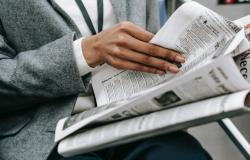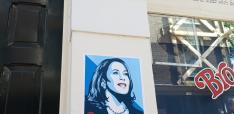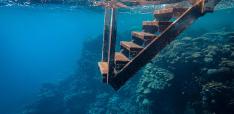How to Read the News - A Guide for Educators (and News-readers)

How can we teach the next generation to read the news well? For educators, this simple question can be deceptively difficult. Do we want our students to be skeptical of everything? Do we want them to trust only sources we as educators have designated as authoritative? Do we want them to understand the various biases of the news, such as the bias toward the negative and spectacular?
It seems that every generation struggles with how to filter misinformation, but that this generation is particularly vulnerable because of the shift in media away from televisions to the internet, social media, and smart devices. The current generation is inundated with information, much of it free but of questionable quality. Some of this “news” attempts to capture our attention through sensational content or by validating our fears and anger. Though this is an old strategy, it has been aggravated by contagion effects of algorithms and social media.
In such a fraught environment, how can we teach our students to read the news well? The following principles are a good starting point.
Understand Your Own Biases and the Biases of the News You Consume. A central tenet of the Art of War is: “If you know the enemy and know yourself, you need not fear the result of a hundred battles.” We might apply a similar principle to the reading of the news: If you know your source and you know yourself, then you need not fear the vagaries of journalism. For this reason, when teaching students to read the news, it is a good idea to ask students to do some research about a particular source of news.
Try to understand your news source. What regional, political, or other biases does this source have? Who owns the paper or outlet? What are the motives of the writer?
However, students should also be asked to write about themselves. A little self-awareness can go a long way toward helping students journey outside their intellectual comfort zone.
Try to understand your position as a reader. What biases do you bring to the reading process? Think of one issue you have a strong opinion about. What evidence would persuade you to change your mind?
Understand the Hindsight Bias. The idea behind this bias is simple: Humans understand things better in hindsight than they do in real-time. History, the social sciences, and even reporting in the news, including the analysis of op-ed writers, employ a kind of magic: They take all the messy details of reality and tame them with a satisfying story. However, this story is only clear in retrospect; rarely in real-time. (To learn more, please read the excellent work of Nassim Nicholas Taleb, especially his book The Black Swan). Thus, all readers of the news should be cautious of pundits offering certainty or analysis of events happening in real-time.
Understand the Bias towards Negative, Sensational, and Recent Events. Most of us have heard the adage: If it bleeds it leads. This simple phrase captures the bias of news toward negative and sensational events. Because negative events tend to be the ones most featured in the news, it is important that students also realize the great many positive (yet boring) trends that are occurring in the world. Thus, books such as Factfullness by Hans Rosling, which employs simple statistics of long-term trends, can help balance the negativity, sensational, and recency biases of the news.
Understand the Bias of Small Samples. Though it may not be practical to give all students a quick seminar on sampling or basic statistics, we can at the very least teach them one basic concept: Be wary of small samples and single cases. Much of the news they consume over their lifetime will consist of unique stories, outliers, or cases that are difficult to categorize. In some instances, a news source might even cherry-pick the kind of news they offer to fit their particular brand. A simple principle can be taught to our students: Be careful of generalizing based on a single story or even a handful of stories.
Practice Triangulating Sources and Information. Just as researchers are taught to use triangulation to overcome weaknesses and biases from any one source of information, so students should be taught basic skills of triangulating information when consuming news. If a particular piece of information seems suspect, students should be encouraged to take the added step of checking other sources to verify the accuracy of that information. However, students must also be taught how to identify circular referencing. If a group of sources tends to quote each other, a reader needs to get outside this group to get high-quality confirmation.
Use the News as a Tool for Wider Learning. Students should also be taught that reading the news opens up pathways for broader learning. In some classes, it may be appropriate for students to keep a journal and write their thoughts on the news. In most classes, teachers will need to remind students to use a dictionary to look up new words, an atlas or online map to find unknown locations, and to use resources such as the online Encyclopedia Britannica to look up additional information.
Are You Stretching? Perhaps the most pernicious bias of all is the inflexibility of our own minds. Once our minds have settled on a particular view of the world, we tend to situate new information into that existing view. Over time it takes an increasing amount of information to overturn that mindset. Thus, the most important question each reader of the news must ask themself is this: Am I stretching? It is a habit of the mind for our most closely held beliefs to harden over time. Practicing true skepticism, testing our most deeply held assumptions, is tricky. Thus, when choosing which news to read, or which books, we should periodically attempt to stretch our muscles by reading material that challenges our established beliefs.
Daniel Clausen is a full-time lecturer at Nagasaki University of Foreign Studies. He is a graduate of Florida International University’s Ph.D. program in International Relations. His research interests vary widely from Japanese foreign policy to English language teaching. His research has been published in Asian Politics and Policy, e-International Relations, Electronic Journal of Contemporary Japanese Studies, The Diplomatic Courier, and Culture and Conflict Review, among other publications.
Photo by Ono Kosuki from Pexels

